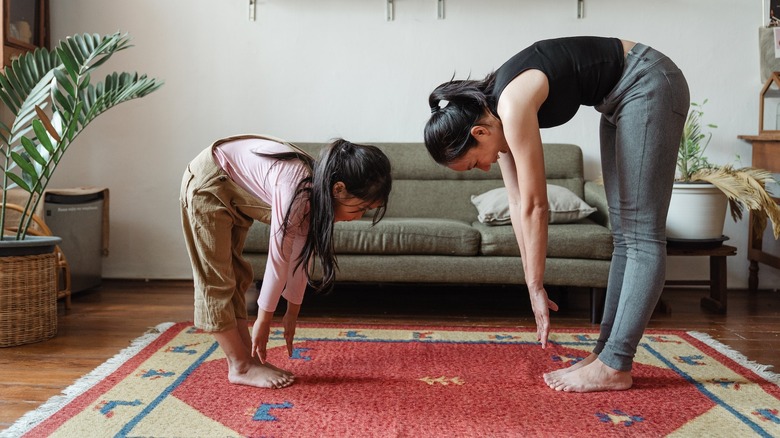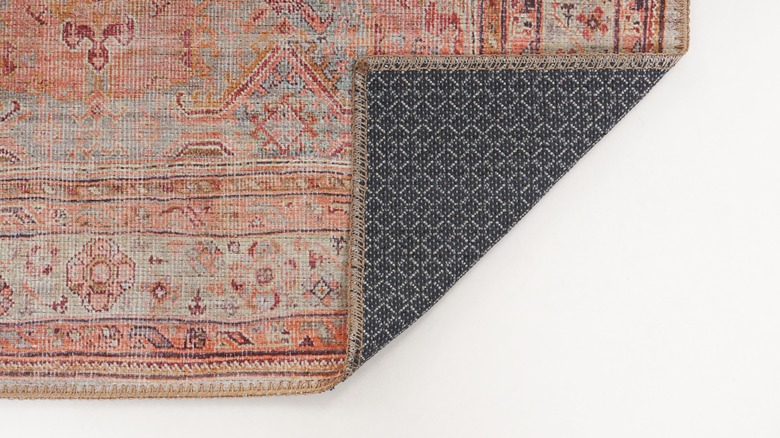How To Make A Rug Non-Slip By Applying Caulk Underneath
Having a rug in your home can add warmth, style, and a cozy ambiance to any room. However, one common challenge many rug owners face is the rug slipping on hard surfaces. Not only can this be frustrating, but it can also pose a safety risk for you and your family. Rugs that are prone to slipping can bunch to form ridges in the middle, which add yet another tripping hazard. To prevent such accidents and ensure a safe and stable environment, one solution is to apply caulk underneath the rug.
And to be clear, we're not suggesting using caulk to adhere the rug to your floor, but rather letting it dry on the rug first so that it can create a grip. Taking this approach is a simple, cost-effective, and versatile solution that provides enhanced safety, protects your floors, extends the rug's lifespan, and offers easy removal and adjustment options. By taking a few minutes to apply caulk, you can enjoy a slip-free rug and create a more secure and comfortable living environment for you and your family.
How to apply the caulk
To do this, you will need your rug, caulk, a caulking gun, measuring tape, putty knife, and scissors or a utility knife. Before applying the caulk, prepare the rug and floor by ensuring that both are clean and dry. It's important to remove any dust, debris, or dirt from the floor, as these can affect the adhesive properties of the caulk.
Using the caulk gun, carefully deposit a thin line of silicone caulk along the edges and corners of the rug's underside. Start with a small amount and gradually increase if needed. Be cautious not to over-apply, as excess caulk may be visible or create a lumpy appearance. After applying, use a putty knife or a similar tool to spread and level out the caulk line. This step will help the rug lay flat and ensures a secure grip. Pay particular attention to the corners and edges, as these are the areas most prone to slipping.
Once the caulk has fully dried, use scissors or a utility knife to trim any excess that may extend beyond the rug's edges. This step is optional, but can help create a neater look and prevent the caulk from catching on anything. Now, just place the rug where you want it — the dry caulk will act as an elastic-like grip between the rug and the floor.
Added benefits
By following these simple steps, you can enjoy several benefits. Enhanced safety is one of them, as a non-slip rug prevents accidents and injuries caused by slipping or tripping, especially in high-traffic areas or households with young children or elderly individuals. The caulk provides a firm grip between the rug and the floor, ensuring the rug stays in place even with foot traffic or vigorous movements. It is cost-effective, as applying caulk underneath your rug is an affordable and accessible solution compared to purchasing specialized rug pads or non-slip mats. Plus, it is versatile; this method can be used on various types of rugs and floor surfaces, such as hardwood, tile, vinyl, or laminate.
It also offers improved protection for floors. Sliding rugs can damage your flooring over time due to excessive rubbing and scratching. Therefore, using this non-slip caulk method helps preserve the quality and appearance of your floors. You will also help to extend the rug's lifespan. Rugs that constantly slide or wrinkle can experience premature wear and tear. The caulk reduces friction and stress on the fibers of your rug. So, by making your rug non-slip, you can ensure it lasts and keep it looking new for longer.


